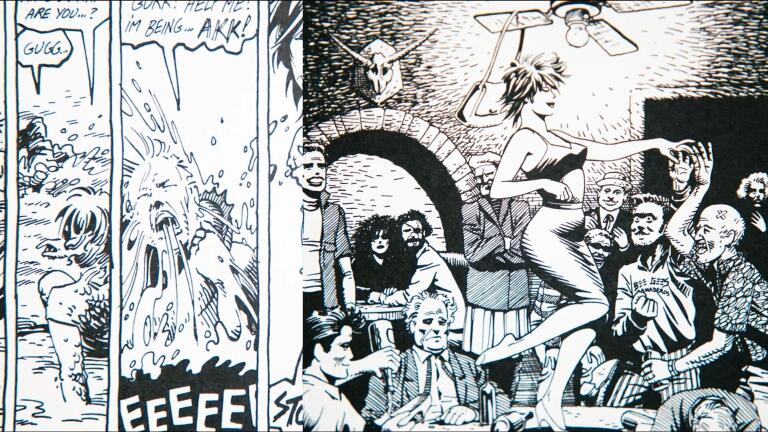Back to Show
Artbound
How Olvera Street Became the Tourist Spot We Know Today
In 1932, socialite Christine Sterling sold the idea of Olvera Street in an effort to boost tourism in the city. With financial support from the wealthy Chandler family, Sterling's romanticized imagination of Mexican culture came to life and would later become the ironic backdrop of muralist David Alfaro Siquieros's provocative mural "América Tropical."
Support Provided By

56:28
Giant Robot was a bimonthly magazine that profoundly affected Asian American pop culture.

56:43
WPA projects live on in L.A. Explores what effect a similar program might have today.

56:49
Six Latinx artists in L.A. work to secure their place in American art.

56:59
When Marcel Duchamp came to Pasadena in 1963, he sent ripples down L.A.'s art scene.

56:43
A self-published comic book made by brothers from Oxnard, Ca. makes comic book history.

53:45
An LGBTQ nightclub event in L.A. called “Mustache Mondays” was an incubator for today’s exciting artists.

56:55
The Autry Museum is working to recontextualize a large mural, dating from the 1980s.

56:34
Site-specific desert art about land ownership, water scarcity and overlooked histories.

56:39
“Sweet Land” recasts this nation's story through the eyes of immigrants and the Indigenous

55:39
Ceramist Helen Jean Taylor crafted timeless works and helped others find peace in clay.

54:35
A tribute to Rubén Funkahuatl Guevara, a Chicano music pioneer.

57:08
The Watts Towers Arts Center was born out of the resilience of 1960s Black L.A.















